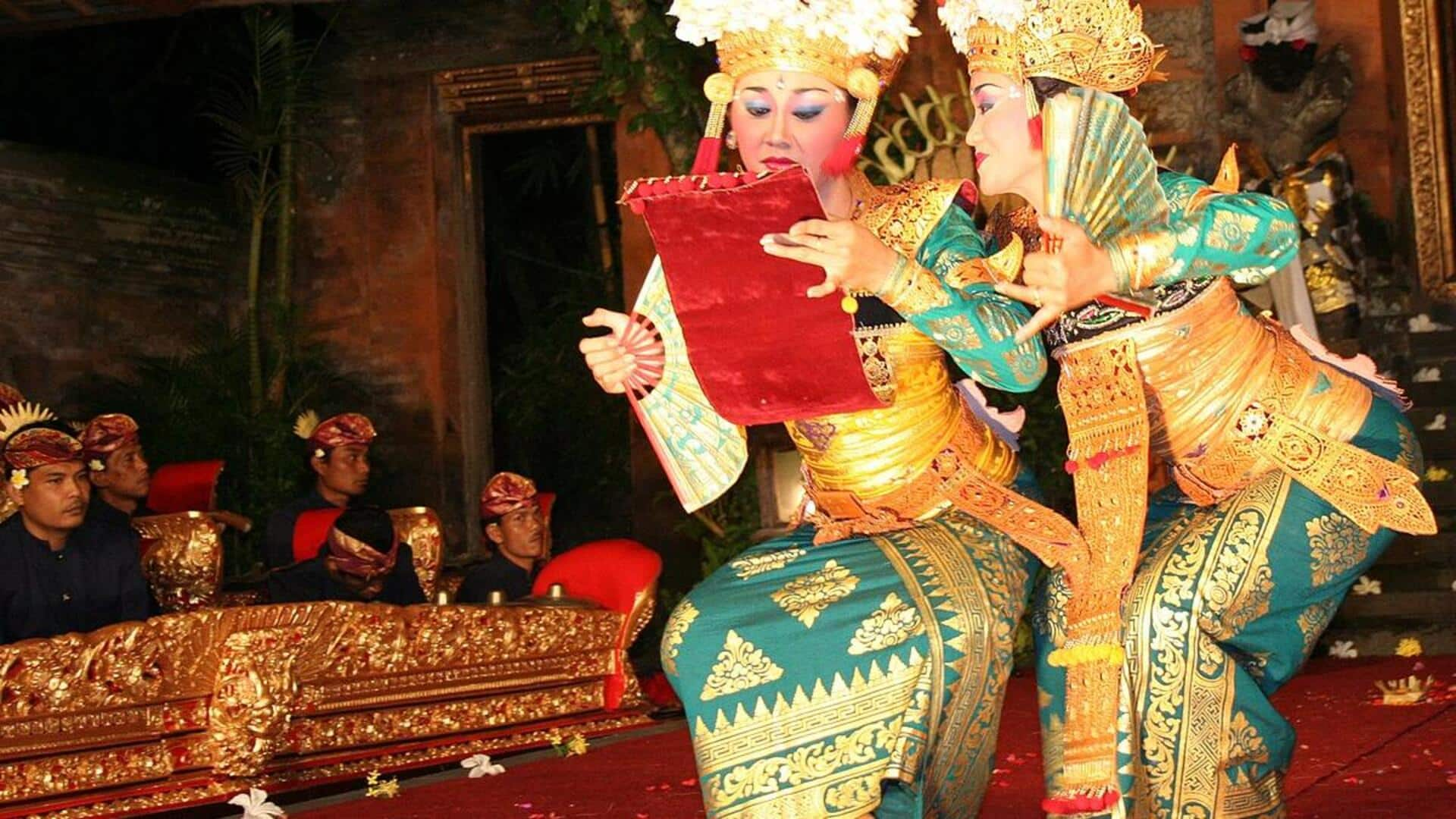
Fascinating facts about Balinese dance you'll love
What's the story
Balinese dance is a beautiful cultural expression that showcases the rich traditions and stories of the Indonesian island of Bali. These dances are not just artistic performances but also a way to preserve history and pass on cultural values. Each dance has its own story, music, and costume, making it a unique experience for the audience. Here are five unique aspects of Balinese dance that make it so special.
#1
The story behind Legong dance
Legong dance is one of the most famous Balinese dances, which tells the story of a prince and his love for a princess. The dance is characterized by intricate movements and facial expressions, which are meant to convey emotions and narrate the story. Traditionally, it was performed exclusively by young girls, who were trained rigorously to master its complexities.
#2
Barong's symbolic meaning
The Barong dance symbolizes the eternal battle between good and evil. In this performance, Barong, a lion-like creature, represents good, while Rangda represents evil. The dance is performed during rituals to protect communities from negative influences. It showcases vibrant costumes and dynamic movements that captivate audiences with its dramatic storytelling.
#3
Kecak's unique musical style
Kecak is famous for its unique musical style, which uses no instruments except for chanting by a group of men. The performance narrates scenes from the Ramayana epic with rhythmic chanting and hand gestures. This dance form has gained international fame for its mesmerizing soundscape and captivating visuals.
#4
Topeng's historical significance
Topeng is a masked dance that goes back centuries in Bali's history. It serves as a medium to narrate historical tales or social commentary through characters portrayed by performers wearing masks. Each mask represents a different character with its own personality traits, making it an interesting watch.
#5
Oleg Tamulilingan's graceful movements
Oleg Tamulilingan is a graceful butterfly dance performed during temple ceremonies or special events in Bali. It depicts two butterflies fluttering around flowers with delicate movements, accompanied by traditional gamelan music. This dance emphasizes fluidity in motion, showcasing Bali's artistic heritage beautifully.